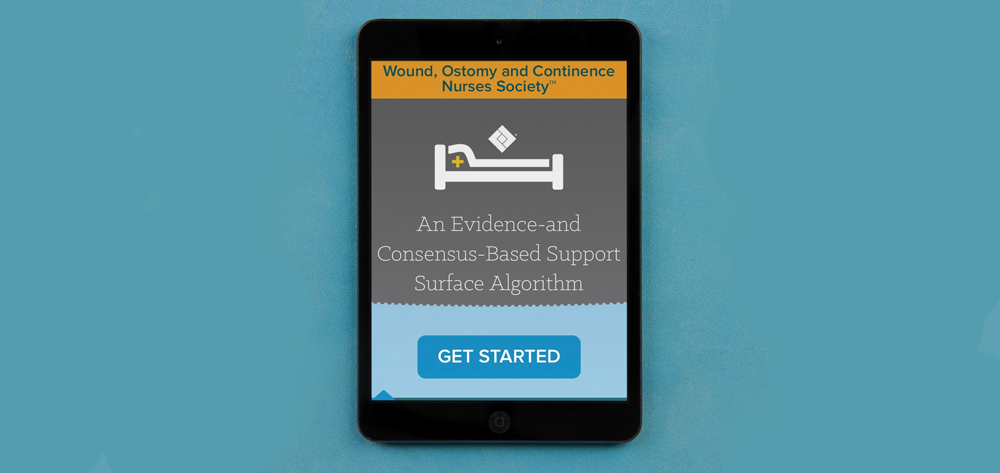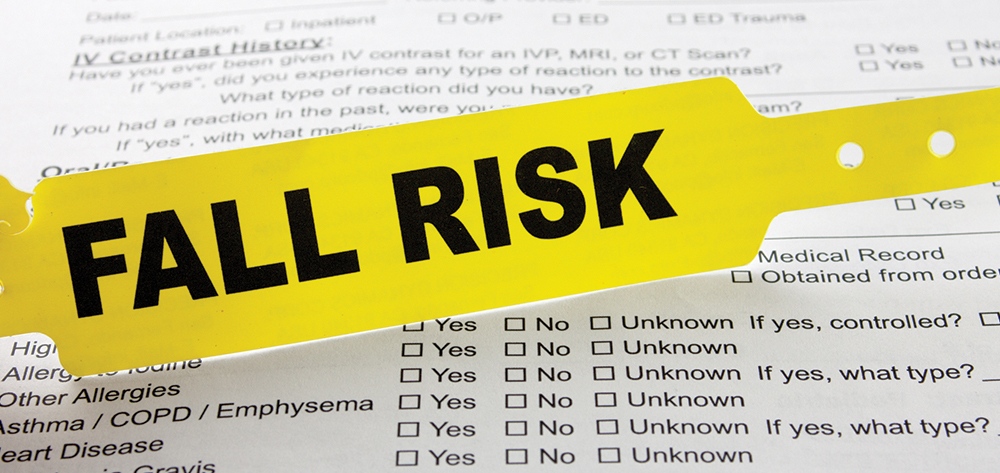For too many patients, the hospital door is a revolving one. About 20% of Medicare patients leave the hospital only to be readmitted within 30 days. Failure to create standard discharge processes, adequately prepare patients and family caregivers for discharge, educate patients about medications, and communicate effectively with postdischarge providers contribute to preventable readmissions. The Hospital Readmission Reduction Program (part of the Affordable Care Act) reduces payments to hospitals with high readmissions rates within 30 days of discharge.
Through efficient coordination, communication, planning, and education, nurses and nurse case managers (NCMs) can play a pivotal role in reducing readmissions. Starting at admission, we can mitigate readmission risk at multiple points during the predischarge and postdischarge periods by:
- appropriately determining the patient’s readiness for discharge
- compiling a comprehensive and accurate discharge summary
- helping to determine an appropriate postdischarge care setting
- coordinating care with multiple settings and providers
- involving the patient and family caregivers in the plan of care
- conducting postdischarge follow-up phone calls.
Nursing interventions on admission
Project BOOST® (Better Outcomes by Optimizing Safe Transitions) recommends interventions begin at admission. To help identify concerns that may warrant additional interventions during the patient’s hospital stay, be sure to evaluate key psychosocial issues, including cognitive status, substance abuse or dependence, abuse or neglect, and documentation of advanced care planning. Communicate areas of concern to the NCM for potential interventions and referral to appropriate resources and referrals.
The General Assessment of Preparedness (GAP) tool helps nurses and NCMs with early patient evaluation. This simple checklist, which various healthcare team members can complete, addresses potential logistical and psychosocial issues.
To learn more about GAP, visit http://www.hospitalmedicine.org/Web/Quality_Innovation/Implementation_Toolkits/Project_BOOST/Web/Quality___Innovation/Implementation_Toolkit/Boost/BOOST_Intervention/Tools/Patient_Preparedness.aspx
Nursing interventions throughout the stay
It’s crucial to identify who will provide care for the patient after discharge and to involve this person in discharge planning. To increase the chance that family caregivers will be involved in planning, write the name of the postdischarge caregiver on the whiteboard in the patient’s room. Preparing the patient and home caregiver for discharge throughout the hospital stay can ease information overload and confusion during the discharge process. Readmission rates decline when patients and family caregivers participate in discharge planning as active care team members. (See IDEAL discharge planning method.)
Nursing interventions during discharge
Many studies link readmissions with lack of prompt follow-up by primary care providers (PCPs) or other healthcare professionals. Ideally, patients should have a follow-up appointment within 48 hours to 7 days after discharge. NCMs may use the following strategies to increase the chance of successful follow-up:
- Develop scheduling agreements with local clinics, such as system-affiliated
ambulatory care clinics. - Create processes for assigning patients to a PCP if they don’t have one.
- Educate patients and home caregivers about the importance of timely and appropriate follow-up.
- Identify and address barriers that contribute to cancelled healthcare appointments.
- Give the patient and family caregivers the discharging unit’s phone number so they can call with questions or concerns.
Communication
During this critical transition time, clear communication must occur among PCPs, home healthcare agencies, long-term care facilities, and other facilities. Nurses and NCMs can assist in gathering written chart information as well as giving verbal report to the caregiver who’s receiving the patient.
The National Transitions of Care Coalition encourages use of a standardized universal transfer tool to promote transfer of necessary patient information during care transitions. The Reducing Avoidable Readmissions Effectively Campaign provides transition information templates in its Safe Transitions of Care Toolkit, which includes checklists for important patient information. Available at www.mnhospitals.org/patient-safety/current-safety-quality-initiatives/readmissions-safe-transitions-of-care, this tool can be faxed to the receiving facility and review-
ed before the patient-report phone call and patient transfer occur.
Postdischarge nursing interventions
The period immediately after discharge is a vulnerable time for patients—one in which rapid changes can occur. Following up with patients and home caregivers soon after discharge can decrease confusion and reinforce follow-up plans. Common topics to discuss during the first postdischarge phone call include medications and pending services or appointments. Healthcare providers should inform patients about the purpose of the call. Training nurses or NCMs to make these calls using a script and an electronic documentation template can help ensure important issues are covered and documented in the medical record.
Discharge to a setting other than home
When a patient is discharged to a setting other than the home, nurses and NCMs can play a crucial role in preventing transfer back to the hospital. Interventions to Reduce Acute Care Transfers (INTERACT) is a quality-improvement program that provides an evidence-based guide, web-based educational materials, and tools designed to reduce transfers (including readmissions) from long-term care and assisted living settings to acute-care hospitals. INTERACT can improve patient safety and satisfaction and reduce readmissions through early identification and evaluation of changes in the patient’s condition, optimal documentation and communication about these changes, and management of the patient’s condition in a way that’s consistent with the patient’s and family’s wishes. (See INTERACT tools.)
Halting the readmission cycle
Hospital readmissions are costly to patients and healthcare facilities. Nurses and NCMs are natural communicators and educators, putting them in an excellent position to help prevent readmissions at multiple points—from admission through discharge and beyond. Becoming familiar with and using easily accessible, evidence-based resources and tools can help nurses and NCMs manage patient transitions optimally and consistently.
Selected references
Brooke BS, Stone DH, Cronenwett JL, et al. Early primary care provider follow-up and readmission after high risk surgery. JAMA Surg.2014;149(8):821-8.
Coleman EA. The Care Transitions Program®: Health Care Services for Improving Quality and Safety During Care Handoffs. (n.d.). www.caretransitions.org/
Hernandez AF, Greiner MA, Fonarow GC, et al. Relationship between early physician follow-up and 30-day readmission among Medicare beneficiaries hospitalized for heart failure. JAMA. 2010;303(17):1716-22.
Improving Transitions of Care: Findings and Considerations of the “Vision of the National Transitions of Care Coalition.” National Transitions of Care Coalition. September 2010. www.ntocc.org/portals/0/pdf/resources/ntoccissuebriefs.pdf
Overview—Project BOOST Implementation® Toolkit. Society of Hospital Medicine. 2015. www.hospitalmedicine.org/Web/Quality_Innovation/Implementation_Toolkits/Project_BOOST/Web/Quality___Innovation/Implementation_Toolkit/Boost/Overview.aspx?hkey=09496d80-8dae-4790-af72-efed8c3e3161
RARE: Reducing Avoidable Readmissions Effectively: Campaign Overview. 2015. Clinical Systems Improvement, the Minnesota Hospital Association, and Stratis Health. http://www.rarereadmissions.org
Readmissions Reduction Program. Page last modified August 4, 2014. Centers for Medicare & Medicaid Services. https://www.cms.gov/medicare/medicare-fee-for-service-payment/acuteinpatientpps/readmissions-reduction-program.html
Shepperd S, McClaran J, Phillips CO, et al. Discharge planning from hospital to home. Cochrane Database Syst Rev. 2010;1:CD000313.
Society of Hospital Medicine. Patient Preparedness/Project BOOST Implementation Toolkit. 2014. http://www.hospitalmedicine.org/Web/Quality___Innovation/Implementation_Toolkit/Boost/Overview.aspx
Strategy 4: Care Transitions From Hospital to Home: IDEAL Discharge Planning. June 2013. Agency for Healthcare Research and Quality, Rockville, MD. www.ahrq.gov/professionals/systems/hospital/engagingfamilies/strategy4/index.html
Transition Communications – Tools and Resources. The RARE Campaign. Institute for Clinical Systems Improvement, Minnesota Hospital Association, and Stratis Health. 2015. www.rarereadmissions.org/areas/transcomm_resources.html
What Is INTERACT? Page last updated February 7, 2011. Interventions to Reduce Acute Care Transfers (INTERACT). Florida Atlantic University. www://interact2.net/
The authors work at the University of Colorado College of Nursing in Aurora. Joan M. Nelson is an associate professor and Laura Rosenthal is an assistant professor.


















